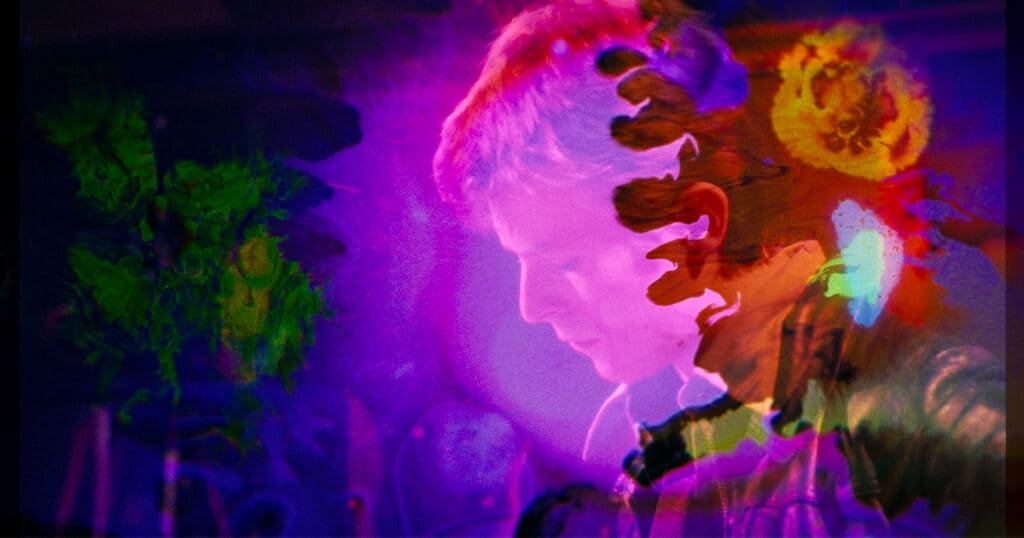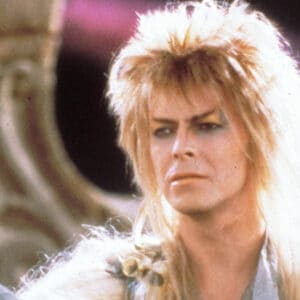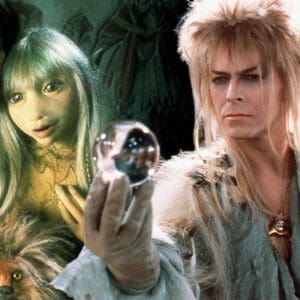Last Updated on September 11, 2022

PLOT: The life and art of David Bowie, as depicted through archival interviews, performances and footage.
REVIEW: Moonage Daydream comes from director Brett Morgen. Over his long career, Morgen has tried to elevate the biographical documentary into an art form. He never uses talking head interviews, preferring to allow his subjects to do the talking for him. In The Kid Stays in the Picture, he had producer Robert Evans alive and well, allowing him to record narration for the film, which, as Patton Oswalt memorably described it, was like listening to Lucifer read his memoirs. In his Kurt Cobain doc, Montage of Heck, he had to get creative, creating musical montages and sound collages. His latest, Moonage Daydream, plays like a melding of the two styles. On the one hand, the movie has constant narration by its subject, the late David Bowie, cribbed from the endless amount of interviews he gave over his career, but he keeps the musical montages and kaleidoscopic style. The result is a documentary unlike any I’ve ever seen and a must-watch for any true David Bowie fan.
However, that comes with a caveat. You may find yourself puzzled by the documentary if you only know Bowie’s music from the hits and don’t know the various phases he went through artistically. I think Morgen assumes the viewer has specific knowledge of Bowie and that, as an audience, we can connect the dots ourselves. For instance, we don’t need to be told that during his “thin white duke” phase, he had a drug problem, but we can connect the dots when watching him wipe his nose and giggle during an unguarded interview with Dick Cavett from the same era. The whole movie is like that to some degree.

If you’re a fan, though, Moonage Daydream works beautifully. Morgen has immense respect for his subject, and the film examines Bowie’s art through his own words rather than his personal life. All that stuff is acknowledged if you know Bowie’s life well enough, but this isn’t a biography. It’s more akin to the video art Bowie made in his downtime but wouldn’t let anyone see (he was an accomplished visual artist and a musician, with his paintings and sculptures, particularly notable).
The film takes you through the phases of Bowie’s career using copious amounts of live footage. It starts with him in the middle of his Ziggy Stardust pandemonium before moving through the thin white duke phase in America (where he seemed to go off the rails) to the more experimental, personal and self-reflexive stuff he did in Berlin with Brian Eno. From there, we dig into his childhood and early years before coming to what initially seems like a climax with the release of his biggest album, “Let’s Dance.” The movie presents this as Bowie’s happy segue into commercialism, generating some of his signature songs and showing him having the time of his life on the “Serious Moonlight” tour. By this point, he’s kicked his self-destructive behaviours, gotten himself into shape, and started to enjoy making “uplifting music,” but just when the movie seems to be ending, it throws us a curveball. Bowie wasn’t satisfied when he broke through commercially and, in many ways, veered into a distinctly offbeat direction afterwards with groups like Tin Machine to be truer to himself as an artist. Indeed, for the rest of his life, he never chased chart success, but as Morgen depicts it, being outside the mainstream seemed to suit Bowie just fine.

The reliance on live footage means a few important and beloved moments in Bowie’s career are short-shifted, particularly Labyrinth and his early days around the time he did “Space Oddity.” Given that he chose to limit his appearances in later years, late-era Bowie also seems sparsely covered. All in all, though, what this lacks in exhaustive detail, it makes up for in creativity and oddness. The latter probably would have pleased Bowie a great deal. If you want to see Moonage Daydream, it’s slated for an HBO premiere sometime next year, but first, it’s getting a theatrical run via Neon. If you are interested in seeing this – it begs to be seen in the biggest and best theater you can find. It’s the closest we’ll ever get to the final, career-capping tour he never gave.





















Follow the JOBLO MOVIE NETWORK
Follow us on YOUTUBE
Follow ARROW IN THE HEAD
Follow AITH on YOUTUBE